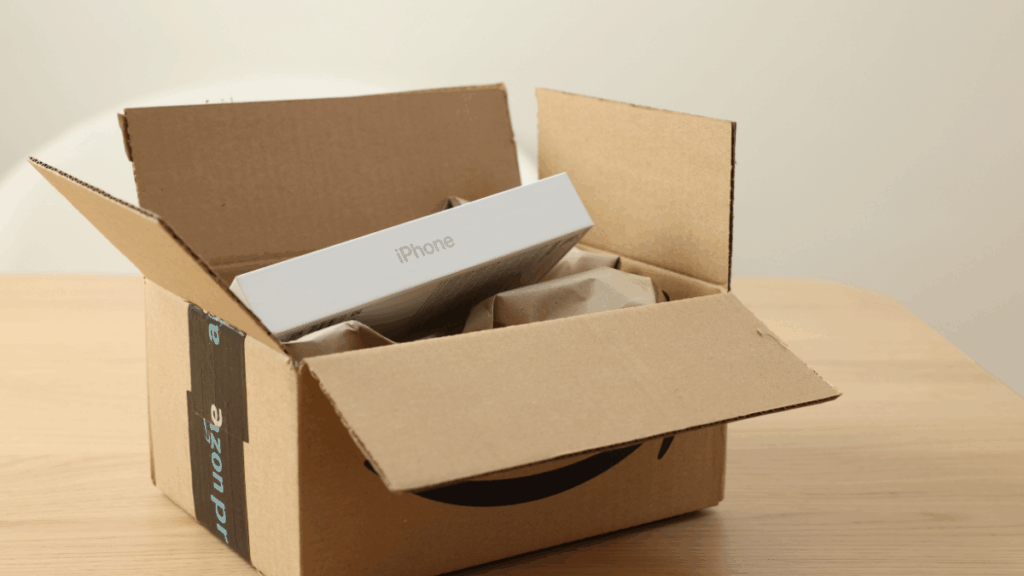Amazon FBA Fees 2026: Complete Calculator & Impact Guide

Executive Summary
Amazon FBA fees are increasing January 15, 2026. The average fulfillment fee rises $0.08/unit for standard-size items priced $10-$50, and $0.31 for items over $50. New inbound defect fees jump from $0.02-$0.07 to $0.32-$5.72. This guide provides marketplace sellers with actionable strategies to calculate impact, protect margins, and optimize profitability before the changes take effect.
What’s Changing January 15, 2026: The Complete Breakdown
Amazon’s 2026 fee restructure impacts every FBA seller. Understanding these changes now gives you a three-month window to adjust pricing, optimize packaging, and protect your profit margins.
Fee Increases by Size Tier
The fulfillment fee changes vary significantly by product size and price point. Here’s what you need to know:
Standard-Size Products (under 20 lbs)
- Items priced $10-$50: Average increase of $0.08 per unit
- Items priced over $50: Average increase of $0.31 per unit
- Low-price FBA items (under $10): $0.05 increase, maintaining $0.86 discount versus standard rates
Oversize Products
- Small oversize (70 lbs or less): $0.12-$0.18 increase
- Medium oversize (70-150 lbs): $0.20-$0.35 increase
- Large oversize (150+ lbs): $0.40-$0.85 increase
- Special oversize: Custom pricing with 5-8% average increase
New Inbound Defect Fees Explained
The most significant change affects inbound shipment accuracy. Defect fees for shipment errors are increasing dramatically:
Previous Rates (2025)
- Standard defect fee: $0.02-$0.07 per unit
- Applied to misrouted, deleted, or abandoned shipments
New Rates (2026)
- Standard-size defect fee: $0.32-$5.72 per unit
- Oversize defect fee: $0.85-$8.25 per unit
- Triggered by: Incorrect labeling, wrong warehouse delivery, abandoned shipments exceeding 30 days
This represents a 1,600% increase for some defect categories—making shipment accuracy critical for maintaining profitability.
Storage Fee Adjustments
Monthly storage fees remain relatively stable with minor seasonal adjustments:
Standard Storage (January-September)
- $0.87 per cubic foot (unchanged from 2025)
Peak Storage (October-December)
- $2.40 per cubic foot (up from $2.35)
Aged Inventory Surcharge
- 181-365 days: $0.50 per cubic foot (monthly)
- 366+ days: $6.90 per cubic foot (monthly)
Calculate Your Exact Impact: Fee Calculator Strategy
Understanding your specific fee impact requires analyzing your entire catalog. Here’s how to calculate and plan:
Step 1: Audit Your Current Fees
Download your Fee Preview Report from Seller Central:
- Navigate to Reports > Fulfillment > Fee Preview Report
- Export last 90 days of data
- Calculate your current average FBA fee per SKU
Step 2: Apply 2026 Fee Structure
For each SKU, calculate the new fees:
Formula for Standard-Size Items:
New FBA Fee = Current Fee + (Price Point Adjustment)
- If price $10-$50: Add $0.08
- If price >$50: Add $0.31
- If price <$10: Add $0.05
Step 3: Factor in Inbound Defect Risk
Calculate potential defect fee exposure:
Monthly Risk = (Units Shipped × Historical Defect Rate × New Defect Fee)
If your historical defect rate exceeds 0.5%, implement immediate process improvements.
Step 4: Project Annual Impact
Annual Fee Increase = (New Fee - Current Fee) × Annual Unit Sales
Most sellers will see a 3-5% increase in total fulfillment costs, but high-volume sellers with quality control issues could face 8-12% increases.
Strategies to Offset Fee Increases
Smart sellers are already implementing these strategies to maintain margins:
Pricing Adjustments Without Losing Buy Box
The key is strategic, gradual price increases that maintain competitiveness:
30-60-90 Day Strategy:
- Days 1-30: Increase price by 1-2% on top performers
- Days 31-60: Adjust mid-tier products by 2-3%
- Days 61-90: Final adjustment for remaining catalog
Buy Box Protection Tactics:
- Monitor competitor pricing daily using repricing tools
- Maintain price parity on high-velocity ASINs
- Test premium pricing on unique or branded products
Packaging Optimization to Lower Size Tier
Reducing product dimensions can save significant fees:
Quick Wins:
- Vacuum-seal soft goods to reduce cubic volume
- Design custom inserts that minimize empty space
- Switch from boxes to poly mailers where appropriate
ROI Calculation:
Packaging Investment ROI = (Annual Fee Savings - Packaging Redesign Cost) / Packaging Redesign Cost
Target minimum 300% ROI on packaging changes.
Hybrid FBA/FBM Strategy
Diversifying fulfillment reduces fee exposure:
When to Use FBM:
- Slow-moving inventory (under 5 units/month)
- High-value items with margins exceeding 40%
- Oversized products facing steep fee increases
Implementation Timeline:
- Week 1-2: Identify FBM candidates using velocity reports
- Week 3-4: Set up merchant fulfillment workflows
- Week 5-6: Test with 10% of eligible inventory
- Week 7-8: Scale based on performance metrics
Critical Inventory Decisions for Q1 2026
IPI Score Optimization
Maintaining IPI above 450 ensures maximum storage capacity during the transition:
Four-Pillar IPI Strategy:
- Excess Inventory: Keep below 15% of total inventory
- Stranded Inventory: Resolve weekly, target 0%
- FBA Sell-Through: Maintain 2.5+ ratio
- In-Stock Rate: Keep top ASINs above 85%
Removal and Liquidation Timeline
December 2025 Checklist:
- Submit removal orders by December 15 for aged inventory
- Create liquidation deals for slow movers by December 1
- Process any pending reimbursement claims before year-end
Q4 2025 to Q1 2026 Transition Plan
October-November 2025:
- Lock in current rates with strategic inventory positioning
- Front-load Q1 2026 inventory to arrive before January 15
December 2025:
- Final pricing adjustments
- Clear aged inventory to avoid surcharges
January 2026:
- Monitor actual fee impact versus projections
- Adjust pricing within first 30 days based on competition
Revenue Recovery Through Cash Flow Optimization
The fee increases will impact cash flow immediately. Here’s how to maintain healthy cash conversion cycles:
Accelerate Cash Access
With fees eating into margins, accessing revenue faster becomes critical:
Same-Day Payout Benefits:
- Fund inventory 14 days faster than standard Amazon payouts
- Maintain ad spend during fee transition period
- Prevent stockouts when margins tighten
Calculate Your Cash Flow Gap
Monthly Cash Gap = (New Monthly Fees - Old Monthly Fees) × 2 (for bi-weekly Amazon payments)
For a seller doing $100K/month with 15% of revenue in fees, the gap could reach $3,000-$5,000 monthly.
Working Capital Strategies
Immediate Actions:
- Negotiate payment terms with suppliers (net-45 or net-60)
- Implement dynamic pricing to maximize revenue per unit
- Consider alternative funding for inventory purchases
Frequently Asked Questions
When exactly do 2026 FBA fees take effect? January 15, 2026 at 12:00 AM PST for all US marketplace sellers. UK and EU markets follow phased rollouts through Q1 2026.
How much are fulfillment fees increasing on average? Standard-size items ($10-$50): +$0.08/unit average Standard-size items (>$50): +$0.31/unit average Oversize items: +$0.12-$0.85/unit depending on tier
What triggers the new inbound defect fees? Mislabeled shipments, incorrect warehouse delivery, deleted shipment plans, abandoned inventory exceeding 30 days, and non-compliance with FBA prep requirements.
Can I opt out of the fee increases? No, all FBA sellers are automatically subject to new rates. Your only alternative is transitioning to FBM (Fulfilled by Merchant).
Will Low-Price FBA still offer discounts? Yes, items under $10 maintain a $0.86 discount versus standard rates, though the fee increases $0.05 from 2025 levels.
How do inbound defect fees compare to 2025? Previous rates: $0.02-$0.07 per unit New rates: $0.32-$5.72 per unit (standard size) This represents up to 1,600% increase for repeat violations.
Should I remove inventory before January 15? Only remove aged inventory (180+ days) and slow movers. Removing performing inventory disrupts rankings and sales velocity.
How will this affect my IPI score? Fee changes don’t directly impact IPI, but increased costs may lead to excess inventory if sales slow, potentially lowering your score.
What’s the impact on multi-channel fulfillment? MCF (Multi-Channel Fulfillment) fees increase parallel to FBA rates, approximately 3-5% across all channels.
When should I adjust my prices? Begin gradual adjustments in November 2025, complete by January 1, 2026 to capture Q4 sales at current margins.
Action Plan: Your 90-Day Implementation Timeline
Days 1-30 (Now – November 2025)
- [ ] Download and analyze Fee Preview Report
- [ ] Calculate impact per SKU using fee calculator
- [ ] Identify packaging optimization opportunities
- [ ] Create pricing adjustment schedule
Days 31-60 (December 2025)
- [ ] Implement first wave of price increases (1-2%)
- [ ] Submit removal orders for aged inventory
- [ ] Optimize inbound shipment processes
- [ ] Negotiate supplier payment terms
Days 61-90 (January 2026)
- [ ] Monitor actual fee impact versus projections
- [ ] Adjust pricing based on competitor analysis
- [ ] Evaluate FBM alternatives for select SKUs
- [ ] Implement cash flow acceleration tools
Key Takeaways for Immediate Action
- Calculate Now: Every day of delay costs margin. Run your numbers today.
- Price Gradually: Small, strategic increases preserve Buy Box while protecting margins.
- Fix Shipment Accuracy: With defect fees increasing 1,600%, one mislabeled shipment could erase a month’s profit.
- Accelerate Cash Flow: Faster access to revenue offsets fee impact—explore same-day payout options.
- Think Long-Term: Use this transition to build a more resilient, diversified fulfillment strategy.
Resources and Tools
Essential Calculators:
- Amazon FBA Revenue Calculator (Seller Central)
- Profitability Dashboard (Business Reports)
- Fee Preview Report (Monthly Download)
Monitoring Tools:
- Inventory Performance Index Dashboard
- Restock Inventory Tool
- Manage Excess Inventory Page
Strategic Planning:
- Fulfillment by Amazon Fee Changes (Official Amazon Announcement)
- 2026 Rate Card (Download from Seller Central)
- Small and Light Program Eligibility Checker
About This Guide
This comprehensive analysis helps Amazon marketplace sellers navigate the 2026 FBA fee changes with confidence. By understanding the full impact and implementing strategic adjustments now, sellers can maintain profitability despite rising costs.
Remember: The sellers who act today will capture market share from those who wait. Every week of delay means lost margin and competitive disadvantage.
Last Updated: October 2025 Note: Fee structures subject to change. Verify current rates in Seller Central.

